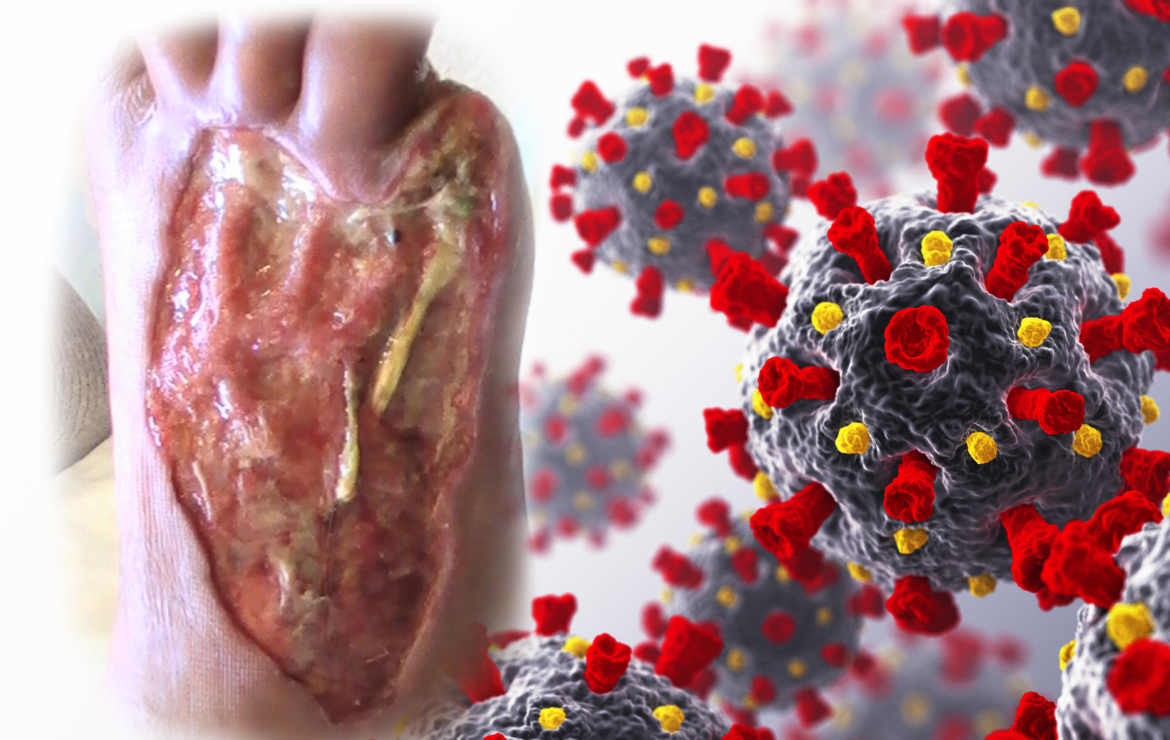The advent of the coronavirus pandemic in the first quarter of 2020 plunged the world into a crisis with unprecedented proportions. Due to the highly contagious nature of the new disease, limited scientific understanding of its make-up, and widespread fatalities, many different areas of everyday human life were abruptly interrupted. The wound care field of the healthcare industry has so far faced challenges both in terms of delivering quality care to patients at home and in long-term care facilities as well as keeping professionals safe. All in all, we can only do our best to adapt to the new normal.
Peculiarities and Risk Factors
People living with chronic wounds such as pressure ulcers, diabetic ulcers, and venous insufficiency ulcers have been some of the most impacted by the pandemic. The primary reason is that these types of wounds require regular care (e.g., wound dressing, disinfection, and debridement) and close monitoring to increase the rate of healing. Moreover, chronic wounds can develop in patients having certain risk factors who test positive for the disease. For example, patients that develop acute respiratory distress syndrome (ARDS) can go on to have pressure ulcers due to limited mobility from lying in the recommended prone position. The ideal positioning usually involves laying patients on their stomachs, propping the arms and legs with cushions, and placing a breathing apparatus on their faces. Geriatric patients and those with compromised skin integrity may be affected by standard measures for combating the spread of COVID-19, e.g., using hand sanitizers and frequent handwashing. Hand eczema, for instance, can develop due to excessive use of hand sanitizers. Other dermatological conditions include allergic/irritant contact dermatitis, intertriginous dermatitis, and ringworm (tinea corporis).
Staying Safe at Long-term Care Facilities
With several promising trial vaccines in the pipeline for coronavirus, we may be regaining a semblance of normalcy sooner than later. However, wound care will be different after the pandemic, and professionals must prepare to adapt to unique circumstances at the end of the curve. For wound care professionals, keeping safe goes beyond just wearing a mask. News has made the rounds of healthcare workers getting skin injuries, such as pressure ulcers, dermatitis, and skin tears due to prolonged use of personal protective equipment (PPE), such as goggles and face masks.
According to a report published in the Journal of the American Academy of Dermatology, there is a high prevalence of skin damage with cutaneous complications in frontline healthcare workers treating patients with the COVID-19 infection. About 97.0% (526 of 542 professionals surveyed) had some form of skin damage affecting the bridge of the nose, foreheads, hands, and the cheeks. Desquamation was observed frequently, as well as dryness and tightness. Moreover, prolonged use of N95 standard facial masks and goggles (6 hours or more) resulted in a high prevalence of skin ulcerations on the face. These issues underpin the need to modify infection control practices and further reduce the duration of shifts to prevent or mitigate occupational injuries.
What Can We Do Differently?
Awareness of the challenges and risks faced by healthcare professionals and patients is the first step to getting back on track. However, adapting to the effects of COVID-19 while improving the standard of wound care will require new working protocols. One of the most promising methods remains telehealth. Telehealth services allow for real-time patient-physician interactions, which can significantly improve the quality of care while making it more affordable to a wide range of demographics. Using video cameras of smartphones, tablets, and computers, wound care professionals can diagnose and monitor the progression of chronic wounds, provide continuous patient education, prescribe medication, and reduce the number of hospital visits.
Leading Innovation in Virtual Wound Care
The Wound Pros offers a telehealth platform with secure communications between wound care teams and patients. Also, notably, it has released a new diagnostic and wound measurement app, named "RITA." The app leverages artificial intelligence (AI) using a smartphone or tablet camera for remote vitals monitoring. It measures users’ heart rate, heart rate variability (HRV), respiratory rate, mental stress, oxygen saturation levels, and blood pressure. Oxygen saturation levels, in particular, can help in identifying early signs of COVID-19 infection. As a wound measurement tool, RITA makes high-quality images and videos of patients' wounds available to professionals within its community. It automatically generates documentation to support wound care teams in diagnosing, monitoring, and prescribing treatment protocols.



.webp)

.avif)
